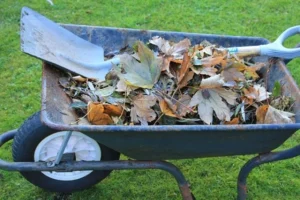Winter hits differently when you’re an apartment grower. The sun’s slant shifts, your cozy corners feel cooler, and suddenly—your once-thriving vertical garden seems… sluggish.
Sound familiar?
If you’re already running a DIY vertical hydroponic setup, you’re not starting from scratch. That’s the good news.
But winter does require a few thoughtful tweaks—especially in those tucked-away spots we rely on for space-saving stacked systems. Your plants feel the chill just like you do.
This guide is here to help you refine, not reinvent. Think cozy upgrades, clever positioning, and smarter layering to keep growth steady and spirits high.
Let’s turn those cold corners into vibrant little green havens—even in the heart of winter.
Know Your Winter Environment Before You Tweak
Before adjusting anything in your layered setup, it’s worth taking a step back and getting to know your space—as it behaves in winter. Indoor climates shift more than we realize once the seasons change.
Maybe the corner near your window used to be perfect in fall—but now it’s drafty, or oddly dry. Or that warm shelf near the heater suddenly makes your basil bolt like it’s summer. These subtle environmental shifts affect each layer differently.
Start by observing for a few days. Where’s the light strongest at noon? Which layer feels driest to the touch? Is the top tier warmer than the bottom?
You don’t need fancy tools. Just use your hands, a basic thermometer if you have one, and your eyes. Even a notepad or phone app to jot things down can go a long way.
Think of this as getting reacquainted with your space—like checking in with an old friend who’s caught a seasonal cold. It’s still the same cozy corner, just with winter quirks.
Once you understand how your system reacts to this new indoor climate, your tweaks will be far more effective—and you’ll waste less time guessing.
This little bit of awareness is the foundation for everything else that follows.
Microclimate Mapping: Your New Secret Weapon
Let’s talk microclimates—those mini weather zones happening right inside your apartment. Even in a single corner, temperature, humidity, and airflow can shift just a few inches apart. And in a vertical hydroponic system? Each layer becomes its own tiny ecosystem.
The top might be warm and dry, especially near a heater. The middle layer may get less light but hold moisture better. The bottom could be cool and damp. Noticing these differences is your new secret weapon.
You don’t need anything fancy to map them. Run your hand along each tier at different times of day. Feel for heat, humidity, or drafts. A basic thermometer can help—but your senses are surprisingly accurate.
Take notes. A sticky note, a smartphone photo, or even voice memos can help you remember what conditions each layer is dealing with. This is especially useful over time as winter progresses.
Once you understand your system’s microclimates, you can match the right plants to the right spots—and avoid frustrating surprises like wilting leaves or stalled growth.
This kind of mapping turns your growing space into a smart, responsive garden. It’s a bit like giving each layer its own weather report—and planning accordingly.
Not high-tech. Just highly aware. And super effective.
Adjusting Layer Design for Thermal Efficiency
When it’s cold outside, your vertical garden needs to be as efficient as your favorite winter hoodie—layered, cozy, and practical. Adjusting your setup for warmth doesn’t mean redesigning everything. It’s more like rearranging furniture for better sun—and better vibes.
Start by noticing how heat naturally behaves indoors. Warm air rises, so your top layers usually stay a bit toastier. That makes them great for herbs and greens that prefer mild temps—think basil, lettuce, or dill.
Lower layers? Those stay cooler and are ideal for cold-tolerant plants like spinach, kale, or parsley. You’re basically creating a mini temperature gradient by doing nothing but rearranging.
Have a heater nearby? Use it! Just not too close. You want gentle warmth, not crispy leaves. Try placing a reflective panel (like foil-covered cardboard) between your setup and an outside-facing wall to trap some heat.
Even adding a layer of felt or fabric behind your system can reduce drafts. It’s like giving your plants a little winter jacket.
You’re not just growing vertically—you’re growing strategically. And these little tweaks? They help your plants stay comfortable, even when your windows are frosty.
That’s the power of smart, cozy cultivation—without needing extra gear or tech.
Lighting Tweaks: Layer-Specific Solutions
Winter light isn’t the same as summer light—it’s weaker, lower, and less consistent. That means your vertical garden’s layers don’t all get equal attention from the sun, and some plants might feel left out.
The top layers usually soak up the most light, especially if near a window. But lower tiers can struggle, especially if they’re shaded by upper plants or shelves.
One simple fix? Rotate your plants regularly. Even a gentle turn every few days helps plants get balanced light and grow evenly.
If you’re noticing certain layers look leggy or pale, adding a small, clip-on grow light can make a huge difference. The good news: you don’t need fancy, expensive gear. Affordable LED clip lights work wonders.
Reflective surfaces are another secret weapon. Placing aluminum foil or whiteboards behind your system can bounce light to darker layers, giving plants a little extra boost without extra electricity.
Finally, angle your setup or plants to catch those low winter rays better. Sometimes just shifting the system a few inches or changing the direction it faces can improve light exposure dramatically.
These lighting tweaks keep your layers happy and growing, even when daylight is scarce.
Managing Moisture and Airflow in Compact Setups
Winter air can be deceptively dry—even inside your apartment. That dryness affects your plants, especially in tightly packed vertical systems where airflow might be limited.
Overwatering is a common winter pitfall. Because evaporation slows down, the bottom layers may stay soggy longer, risking root rot. Check soil or grow medium moisture carefully before adding water.
A simple finger test works wonders—if the medium feels damp but not wet, hold off watering. Your plants will thank you.
Good airflow is just as important as moisture. Stagnant air invites mold and pests, which nobody wants in a small home garden.
If your system feels stuffy, try cracking open a nearby window for short bursts during the day. Even a small fan set on low can help circulate air without chilling your plants.
Just avoid blasting cold drafts directly on your crops—they prefer gentle breezes.
Balancing moisture and airflow means your layered garden won’t feel like a swamp or a desert. It keeps your plants healthy, happy, and thriving through the winter months.
Small tweaks here make a big difference—no complicated gadgets required.
Plant Choices That Work with Winter, Not Against It
Picking the right plants for your layered winter garden is a game-changer. Some veggies and herbs naturally thrive in cooler, lower-light conditions—perfect for your cozy corners.
Leafy greens like kale, spinach, and Swiss chard are hardy winter warriors. They tolerate cooler temps and still deliver tasty harvests.
Herbs such as parsley, cilantro, and thyme also do well in less light and cooler air. Plus, they add fresh flavor to your kitchen all winter long.
Avoid plants that demand strong light and warm temps during winter, like basil or tomatoes—they tend to slow down or get stressed.
Staggering fast and slow growers across your layers keeps things interesting. Plant quick-growers like lettuce on the top tiers for a speedy harvest, while slow-growers can fill lower spots.
This way, you have a constant flow of fresh greens without overloading any single layer.
When in doubt, choose plants labeled “cool-season” or “shade-tolerant.” They’re your best friends for winter hydroponics.
Remember, winter is about working with your environment—not fighting it.
Choose wisely, and your vertical garden will reward you with vibrant, tasty crops even in the chilliest months.
Small Tweaks, Big Winter Wins
Winter growing in cozy corners doesn’t have to be a struggle. With a little observation and simple adjustments, your layered vertical system can thrive even when it’s chilly outside.
Remember, success comes from paying attention—knowing your space, mapping microclimates, and making smart, gentle tweaks.
Try moving plants, adjusting lighting, or managing moisture just a bit differently. These small changes add up to healthier, happier plants.
So, pick one tip from this guide and experiment this week. Your winter garden will thank you.




